Is Hemp or Bamboo Clothing More Sustainable? – 10 Deciding Factors
As an Amazon Associate, Ecotero earns from qualifying purchases.
Clothes made of hemp and bamboo fabrics are two of the most sustainable clothing today, and both are equally popular to eco-conscious consumers.
But which is more sustainable, hemp or bamboo clothing?
People have been asking this question for a while now, and quite frankly, the answer can be tricky.
Now, you may already know that bamboo fabric is more sustainable than cotton.
But will this giant grass prevail against hemp too?
That’s what we will answer in this article.
We will take a closer look at 10 different areas where hemp and bamboo directly impact the environment – from the time they are grown to the time their final products are thrown away.
So, hemp or bamboo clothing, which do you think is more sustainable?
Let’s start splitting hairs (or in this case, the fibers).
Hemp vs. Bamboo Clothing Sustainability Comparison Table
| Sustainability Criteria | More Sustainable Clothing (hemp vs. bamboo) |
|---|---|
| Cultivation | Comparable |
| Plant Environmental Benefits | Hemp |
| Material Availability | Comparable |
| Harvesting Impacts | Bamboo |
| Supply Renewability | Bamboo |
| Transport Emissions | Comparable |
| Fabric Processing & Production | Hemp |
| Durability | Hemp |
| Care and Maintenance | Comparable |
| Final Product Disposal | Hemp |
1. Hemp vs. Bamboo Cultivation
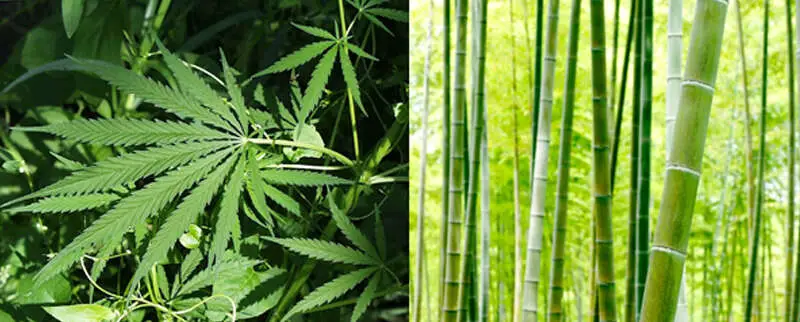
Verdict: Tie. Both hemp and bamboo can be commercially grown without much impact on the environment.
Hemp
Hemp can be grown in various soil, and it doesn’t need much water to live. It also doesn’t need fertilizers and pesticides.
Moreover, hemp is a high-yielding crop, which means it can produce more product on smaller land.
According to multiple sources, hemp can produce 250% more fiber than cotton and 600% more fiber than flax with the same land space.
Now, to be clear, Hemp is not the same as Marijuana.
While both are varieties of the Cannabis plant species, hemp (aka industrial hemp) only has trace amounts of THC (delta-9-tetrahydrocannabinol), the psychoactive ingredient associated with Marijuana.
Bamboo
Bamboo is a type of grass and can live on almost all kinds of soil.
And as you might be familiar with grass, they grow and thrive quickly on their own, even in areas where crops can’t survive.
A bamboo plant doesn’t need much water to survive, nor fertilizers and pesticides.
2. Environmental Benefits of Hemp vs. Bamboo
Verdict: Hemp
Most varieties of industrial hemp are naturally resistant to pests and insects.
And without using pesticides, no harmful chemicals can seep down the soil and pollute the environment.
Hemp has deep roots that hold the soil together and prevents erosion. Its deep roots also help loosen the dirt so more delicate crops can grow afterward.
They are also safe for bees and other pollinators.
And like all plants, hemp helps absorb carbon dioxide (CO2) from the air and convert it to oxygen.
But what’s truly impressive about hemp is the fact that it can be used for bioremediation – a practice of using plants to decontaminate soil.
Hemp can grow perfectly healthy on contaminated soil while absorbing toxins and other contaminants through “phytoremediation.”
Phytoremediation refers to some plants’ ability, including hemp, to remove or convert harmful contaminants from the environment.
Besides toxins and chemicals, hemp also absorbs heavy metals such as selenium, cadmium, lead, and nickel that can be toxic to humans when absorbed in high doses.
Too good to be true?
Well, hemp has already been used to help decontaminate the soil in Chernobyl and have positive results!
Bamboo
Have you heard of bamboo Kun?
It’s supposed to be bamboo’s natural ability to fight off pests, bugs, and bacteria, which is why it doesn’t need pesticides and herbicides that can pollute the environment.
A bamboo forest is a natural habitat of diverse organisms and ecosystems. Birds, insects, small animals, and even human beings can turn to bamboo forests for food and shelter.
Bamboo helps reduce pollution by absorbing tons of carbon dioxide (CO2) from the air.
Moreover, a bamboo forest can produce up to 35% more oxygen than a tree forest of the same mass.
3. Hemp vs. Bamboo Material Availability
Verdict: Tie. Both hemp and bamboo are good sources of renewable raw materials.
Hemps only takes 3 to 4 months to be readily harvested. On the other hand, bamboo can be harvested within 3 to 5 years.
Now, one might say that the time gap for each plant to reach maturity and usability is huge.
Hemp can be produced faster so it obviously wins this criteria, right?
Well, hold that thought for a second.
Hemp is a rotational crop. Farmers can only plant it once or twice on the same land plot per year to avoid nutrient discrepancy in the soil and plant diseases.
Meanwhile, bamboo might take longer to mature, but once it’s fully grown, you don’t need to replant bamboos as it will naturally replenish itself.
A single bamboo plant will also have multiple “trees” or culms on it.
So technically speaking, a mature bamboo plant can be a source of raw material every few months.
4. Harvesting Hemp vs. Bamboo
Verdict: Bamboo
Bamboo trees are “fell” or harvested with manual labor using a saw, bolo, axe, or a machete.
You don’t need to use machines that run on non-renewable energy sources and contribute to carbon emissions.
100% of the bamboo plant is also biodegradable, so all the remains of harvesting (e.g. leaves, cuttings, small branches, etc.) will simply return to the soil as natural fertilizers.
Hemp
For small plots, hemp is harvested by hand. However, in most cases, the hemp used for fabrics are harvested using machines.
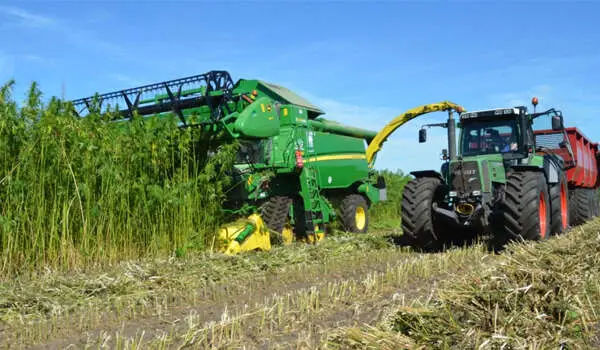
5. Hemp vs. Bamboo Supply Renewability
Verdict: Bamboo
Farmers only need to plant bamboo once, and it will continue to become a sustainable source of raw materials for clothing and other commodities.
Granted that bamboo harvesting is done correctly, and the bamboo buds or rhizomes are not damaged.
Moreover, harvesting bamboo doesn’t cause soil erosion since you’re not killing the plant itself. It also doesn’t cause nutrient cycling disturbance in the soil.
Hemp
Once a batch of hemp is harvested, you’ll have to wait a few months to plant on the same spot again.
You need to plow and till the field again, consume energy, resources, and emit carbon dioxide.
Wow, two sections in a row scored for bamboo! Is bamboo clothing more sustainable than hemp?
Now, please don’t jump to conclusions yet, as we’re only halfway there.
6. Transporting of Raw Materials
Verdict: Tie
When looking at product sustainability, we also need to consider the emissions caused by transporting the raw materials from their source to processing facilities.
At the moment, China is the leading producer of both bamboo and hemp.
So it’s safe to assume that transporting raw materials for hemp clothing and bamboo clothing causes a similar carbon footprint.
What do you think?
7. Hemp vs. Bamboo Fabric Processing & Production
Verdict: Hemp
There is only one major variety of commercial hemp fabric, while bamboo has five.
Let’s discuss hemp fabric production first.
Hemp Fabric Production
Hemp requires less or no chemicals to be spun into cloth.
After hemp is harvested, they are then “retted” for 4-6 weeks.
Natural retting is a common practice by which hemp fibers are broken down to be made available for spinning into yarns.
It can be done by leaving the cut hemp stems in damp fields for several weeks (aka dew retting), or by placing the stems in running water (water retting).
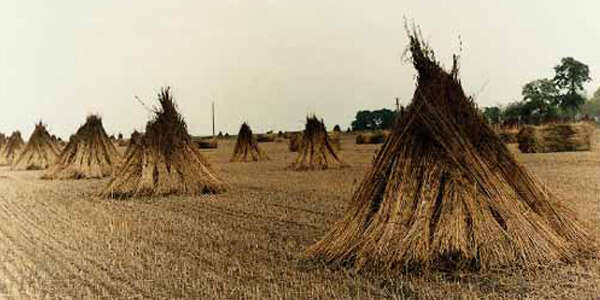
Now, we say “natural” retting because retting can also be done chemically. Hemp fabrics that are retted using chemicals are often labeled as “hemp viscose.”
Although, most of the hemp fibers used in clothing are ret naturally.
After retting, processing of hemp fibers will be as follows:
- Breaking: The stems are then broken by passing them through a mechanical breaker.
- Beating: This process is also known as “scutching” and is when the stems are beaten to separate the desired fibers from hemp’s woody core.
- Hackling: This is where the separated hemp fibers are combed to remove any remaining woody particles and align them into a continuous sliver.
- Roving: The hemp sliver is twisted and drawn out to improve strength.
- Spinning: The final process to produce a better and finer hemp yarn before it is made into cloth and textiles. (sources 1, 2)
If you’re a hemp supporter, you’d love to know that hemp clothing is more sustainable than bamboo in terms of fabric production – big time!
Can you guess why?
Bamboo Fabric Production
The chemical-intensive fabric processing of bamboo is what makes its sustainability questionable among critics.
Most bamboo clothing today is made of bamboo rayon, and it is not exactly eco-friendly.
However, there are five commercial bamboo fabric types – Bamboo Rayon (Bamboo Viscose), Bamboo Linen, Bamboo Lyocell, Bamboo Modal, and Bamboo Blends.
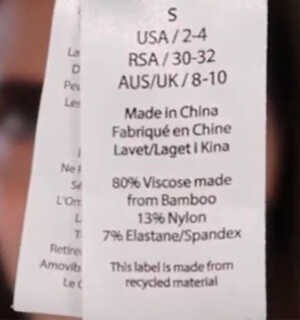
There are also two ways to produce bamboo fabric, mechanical and chemical.
Chemical Production of Bamboo Fabric
Bamboo fabrics made chemically are bamboo rayon (aka bamboo viscose), bamboo modal, and bamboo blends.
These bamboo fabrics are produced by bleaching and dissolving bamboo chunks in chemical solutions of Sodium Hydroxide (caustic soda), Sulfuric Acid, and Carbon Disulfide.
The resulting material is a pulpy viscose substance, which is then treated and processed to create a soft and silky bamboo fabric.
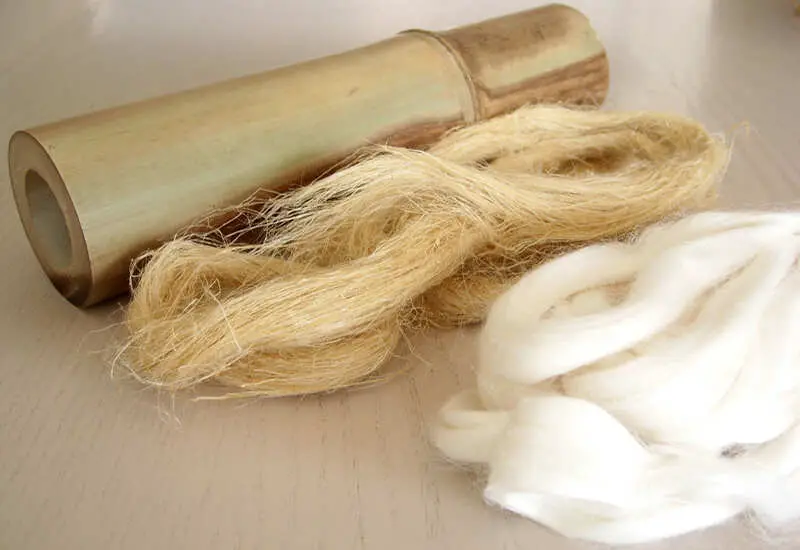
None of the natural characteristics of bamboo remains (such as the antibacterial properties) in the resulting bamboo fabric.
Worse, the chemicals used in the process are highly toxic to the environment and a person’s health.
But it’s not all bad news for bamboo clothing supporters.
There is, however, another kind of chemically produced bamboo fabric that is more eco-friendly.
It is often used in bamboo sheets and even in bamboo clothing for babies!
What is Bamboo Lyocell?
Bamboo Lyocell is one of the most environmentally-friendly fabrics for clothes.
Unlike bamboo rayon, bamboo lyocell production relies primarily on amine oxides such as M-Methylmorpholine N-oxide (an organic compound) to dissolve the bamboo pulps.
And while the production of bamboo rayon uses an “open-cycle system” where chemical wastes are released into the environment, bamboo lyocell uses a “closed-loop production system.”
In a closed-loop system, up to 99% of the amine oxide solvent is captured and reused repeatedly.
Hence, producing bamboo lyocell uses far less water and leaves a far less environmental impact.
Mechanical Production of Bamboo Fabric
This process involves crushing bamboo with machines and using a natural enzyme to produce a mushy mass.
The mushy mass is then combed to separate the bamboo fibers, which are then spun into yarn.
Of all the bamboo fabrics, only Bamboo Linen is produced using a mechanical process.
And according to the NRDC, Bamboo Linen is the “true green” bamboo fabric because it is made of 100% bamboo fiber with minimum pretreatment.
However, you’re less likely to find bamboo clothing made of bamboo linen because this fabric is rough to touch and expensive to create.
8. Hemp vs. Bamboo Clothing, which is More Durable?
Verdict: Hemp
Did you know that Levi jeans were originally made from hemp?
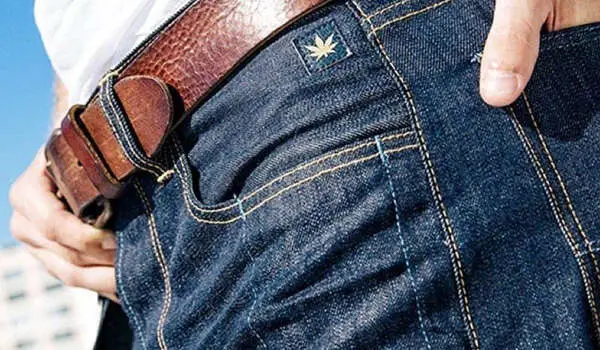
In general, hemp is a more durable fiber.
This is why bibles are often made with hemp paper so that they will last longer. Hemp is also used as a rope in ships.
The caveat is clothing made of hemp fabric is less soft when compared to bamboo clothing.
Nevertheless, more durable clothing means it will last longer despite repeated wash and wear, saving raw materials, energy, resources, and money.
And durability-wise, hemp is more sustainable than bamboo once again.
Now, if you have been keeping score, hemp is already ahead of bamboo up to this point. (3 to 2)
It sure seems like hemp is better than bamboo in terms of sustainability, right?
But again, let’s not get ahead of ourselves and take a look at the remaining comparisons, shall we?
9. Hemp vs. Bamboo Clothing Care and Maintenance
Verdict: Tie
You can wash both hemp and bamboo clothing without the need for special detergents and chlorine bleaches.
Hence, washing these sustainable clothes won’t cause toxic chemical waste in the water system.
Both can also be washed at all water temperatures. Therefore, you won’t need to use warm water to do the laundry.
10. Final Product Disposal
Verdict: Hemp
While bamboo fiber, in general, is a completely biodegradable material, the whole narrative changes when it comes to bamboo clothing.
As we discussed earlier, most bamboo clothing on the market is made with bamboo rayon.
Unfortunately, according to the FTC (Federal Trade Commissions), rayon is not biodegradable because it will not break down in a reasonably short time after disposal.
Of course, bamboo lyocell and bamboo linen are considered to be biodegradable.
However, you can rarely find bamboo clothing made of them.
Meanwhile, most hemp clothing is eco-friendly since they are biodegradable and compostable.
Conclusion
There is no doubt that clothes made of either hemp or bamboo is more sustainable than, say, cotton and polyester.
However, when it comes to which is more sustainable between hemp and bamboo, we take the side of hemp, given that:
- Hemp helps decontaminate soil and the environment
- Hemp fibers are more durable than bamboo
- Hemp clothing is 100% biodegradable
- Most hemp fabrics don’t undergo chemical treatments that harm human beings and the environment
However, we are not suggesting that you should stop supporting bamboo clothing or stop planting bamboo for hemp.
Our simple goal is just to answer the question many people ask which is:
“Which is a more sustainable clothing, hemp or bamboo?”
And we hope this article has given you an adequate answer.
But we would like to hear from you too.
Would you agree that hemp clothing is more sustainable than bamboo clothing?

Both have place in nature, eliminating bamboo for hemp would be disastrous for the earth.
Here is one good math question for you – If one acre of bamboo produce 10 times more fiber than one acre of cotton,
and one acre of hemp produces 250% more fibre than cotton, and 600% more fiber than flax, then how much more fiber per acre then hemp and flax bamboo produces?
ettitude organic bamboo lyocell is 100% non toxic, does not use any harmful chemicals during fiber creation process, and OEKO-TEX certified.
it is amazing how people never talk about organic bamboo lyocell when the talk about fabrics made from bamboo.